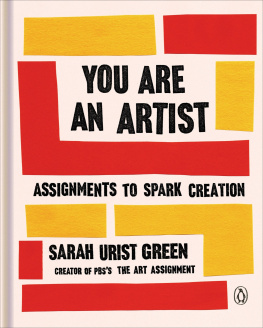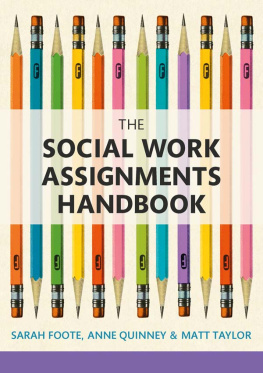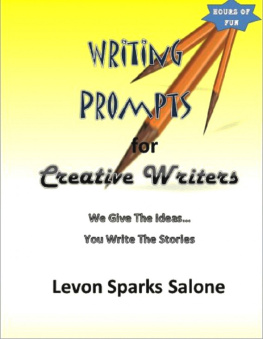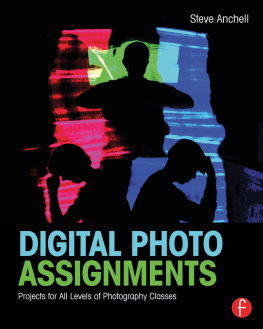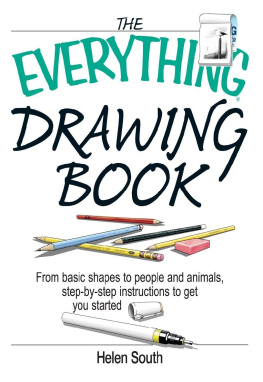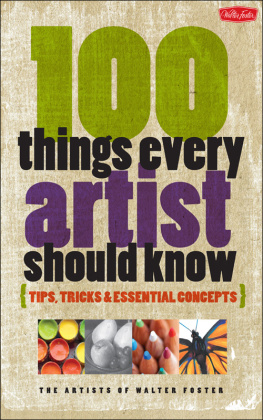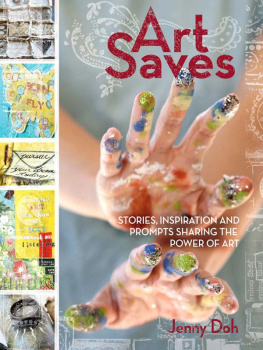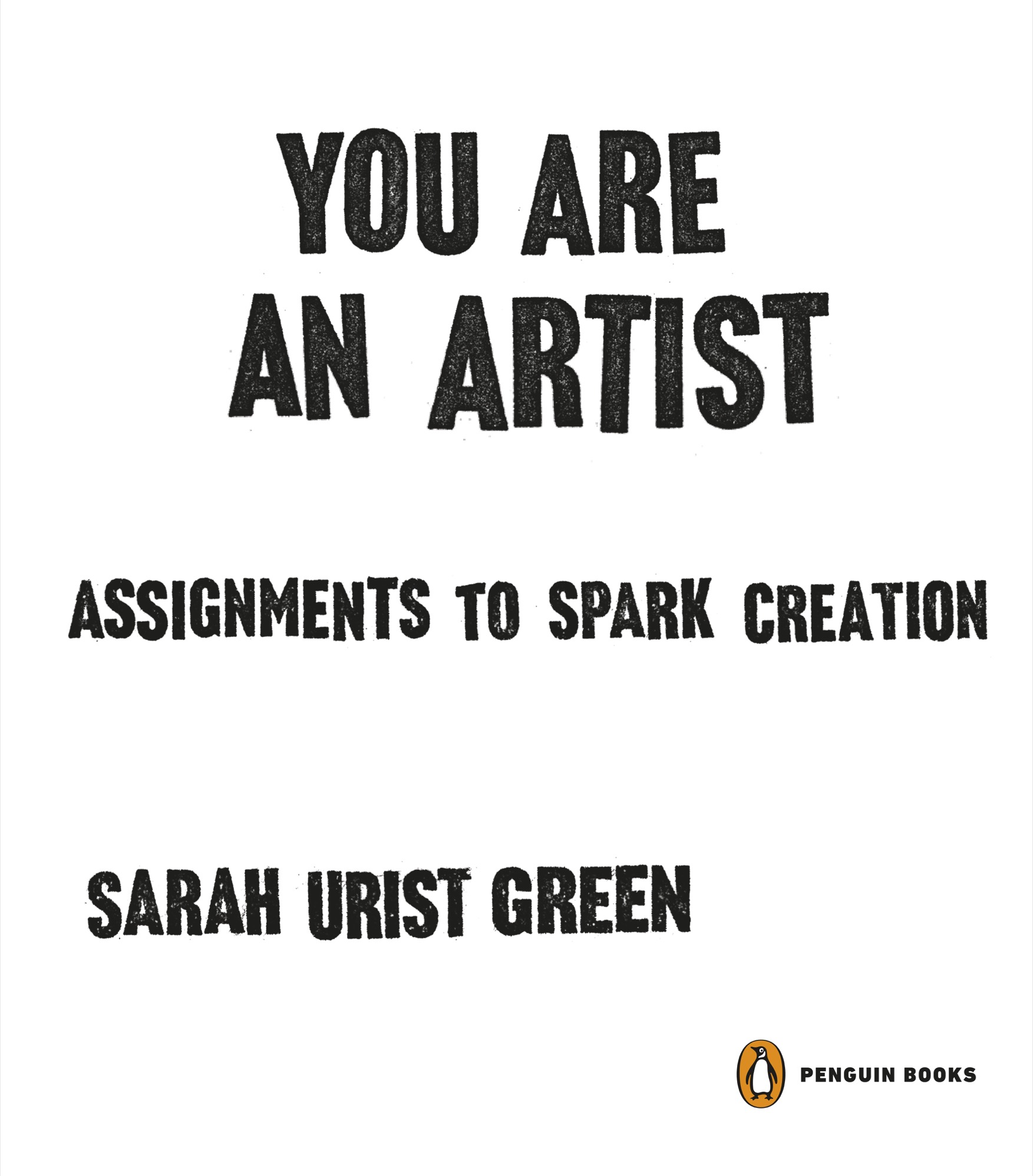PENGUIN BOOKS
YOU ARE AN ARTIST
Sarah Urist Green is a curator, art educator, and creator of The Art Assignment, a PBS video series exploring art history through the lens of the present. A former curator of contemporary art at the Indianapolis Museum of Art, Green holds an MA in modern art history from Columbia University. She lives in Indianapolis with her husband and two children.
PENGUIN BOOKS
An imprint of Penguin Random House LLC
penguinrandomhouse.com
Copyright 2020 by Sarah Urist Green
Penguin supports copyright. Copyright fuels creativity, encourages diverse voices, promotes free speech, and creates a vibrant culture. Thank you for buying an authorized edition of this book and for complying with copyright laws by not reproducing, scanning, or distributing any part of it in any form without permission. You are supporting writers and allowing Penguin to continue to publish books for every reader.
Images credits appear on .
LIBRARY OF CONGRESS CATALOGING-IN-PUBLICATION DATA
Names: Green, Sarah Urist, author.
Title: You are an artist : assignments to spark creation / Sarah Urist Green.
Description: New York : Penguin Books, 2020. | Includes bibliographical references. | Identifiers: LCCN 2019039031 (print) | LCCN 2019039032 (ebook) | ISBN 9780143134091 (hardcover) | ISBN 9780525505853 (ebook)
Subjects: LCSH: ArtTechnique. | ArtProblems, exercises, etc.
Classification: LCC N7430 .G678 2020 (print) | LCC N7430 (ebook) | DDC 700.2dc23
LC record available at https://lccn.loc.gov/2019039031
LC ebook record available at https://lccn.loc.gov/2019039032
pid_prh_5.5.0_c0_r0
FOR MY MOM, WHO GAVE ME MY FIRST ART ASSIGNMENTS
CONTENTS
INTRODUCTION
When I was a kid growing up in Birmingham, Alabama, I took an art class taught by Lonnie Holley. At the time, he went by the name the Sandman, after the sandstonelike material that inspired his first artworks and into which he carved faces, figures, and forms. Holley was like no one Id ever met: warm, wise, wildly imaginative, rings on nearly all of his fingers, and driven to make in a way Id never witnessed before. Best of all, he took us young people seriously.
Holley presented us each with a block of sandstone and challenged us to carve something from it. We knew what his work looked like and not much else, but we set about our task with gusto, filing away our blocks until we were happy enough with what wed made. The idea was not for us all to become artists like Holley or to make sculptures that looked just like his. It was to try on a way of working for a while, to gain a momentary glimpse into the materials and ideas that inspired him to make art.
I havent carved sandstone since, but the experience stayed with me. Holley expanded my world by showing me his singular way of looking at our shared surroundings. This was the first of what would be many interactions with artists in my life, each of whom showed me there were vastly different ways of perceiving the world and manipulating the physical stuff around us. As I went on to make my own art and hack a path toward a career in art history and curating, I treasured each moment when an artist shared their time and perspective.
It didnt take long to see that not everyone felt this way. Artsy, I learned, was a dismissive term. Found-object sculptures like the ones Holley made were junk. People who tried to sell these things were scam artists. If the art was minimal or abstract, at least one person in the room would say, I could do that. This world of people and things that felt so precious to me was pretentious to many others. But I understood why they felt that way. By the time I became a curator in an art museum, Id seen plenty of the money-fueled art world that gives all art a bad rap. I wanted to do what I could to bridge what seemed like an enormous divide between the art world I knew and the one most people encounter when they visit a museum or gallery. Writing wall labels and organizing exhibitions from within those museums and galleries wasnt cutting it.
I want everyone else to feel the way I do when standing in a gallery surrounded by works Ive seen in process in a studio, made by an artist Ive eaten pierogies with. Its not that the art cant stand on its own; its that after trying to make things myself and meeting a lot of artists, I dont tend to think of these objects as hallowed artifacts belonging to a different realm. Artworks can be transporting and transformative, but they are made by people. The individuals who make this stuff are not fundamentally different from any other humans. My exposure to artists and making helped make art relatable for me and has also deeply enriched my experiences with it. Throughout my professional life, Ive wondered: How could I bring some of that to people who didnt luck into a childhood art class with Lonnie Holley?
Thats where these assignments come in. In 2014, I left my job as a curator to make a video series called The Art Assignment with PBS Digital Studios. Rather than working out of the basement of an art museum, I began to travel around the country, visiting a wide range of artists at various stages of their careers and asking them to give you assignments. Many of the prompts that appear in this book were drawn from the video series, along with a number of newly commissioned ones. All of these artists have offered prompts that relate in some way to their own ways of working, be it an activity theyve tried and liked in the past or an idea they are currently exploring. It could be a technique they use on a daily basis or something theyve never tried but always wanted to. Following their lead, youll invent imaginary friends, collaborate with people youve never met, and become someone else (or at least try). Youll construct a landscape. Youll declare a cause. Youll find your band.
In all cases, these assignments were made with you in mind. You dont have to know how to draw well, stretch a canvas, or mix a paint color that perfectly matches that of a mountain stream. This book is designed for artists at every stage, from seasoned makers to those for whom the act of picking up a pencil causes anxiety. It is also made for those who may spend a fair bit of time on the internet, creating and consuming a not-insignificant amount of media through screens. Making art and being a member of technological life are not mutually exclusive endeavors. As you explore these assignments, I encourage you to use the tools available to you in a way that feels natural, shifting between making things with your hands and using technology to inform, instruct, and circulate your work.
You will find that many of these assignments were made with the hope that you might share your work in real life or online, putting it out into the physical world or allowing the social internet to be your art venue, community, and support system, all in one. Throughout the book, youll find a selection of responses to these assignments that will perhaps jump-start your own creative process and promote the sharing spirit. If you dont feel comfortable showing your work, thats perfectly fine. Sometimes you are your own best audience. But if youre so inclined, I invite you to share your responses to these assignments on your social media platform of choice, tagging your post with #youareanartist . By using the hashtag, you can share your work with me, find and enjoy the art that others make, and participate in the building of a new, more democratic art world of our own making.
There are no deadlines for these assignmentsunless youd like to give one to yourself, or a teacher has assigned you one of the activities in this book. (If so, stick to it! Deadlines can be the best motivators.) Regardless, keep in mind that you may experience a period of uncertainty between reading an assignment and formulating a response. Initially, you may feel uninspired, only to see an amazing reflection in your phone screen and jump at the opportunity to capture it (see page 182, Off). Or you might be moving to a new place, and the process of figuring out where to set up your work space will become an artwork in itself (see page 229, Conjure a Studio). You might be visiting your aunt and decide to mine her collection of vintage cookbooks (see page 107, Sorted Books). Perhaps you need to entertain a child (see page 67, Paper Weaving) or figure out a way to see your friend who lives far away (see page 111, Meet in the Middle).

